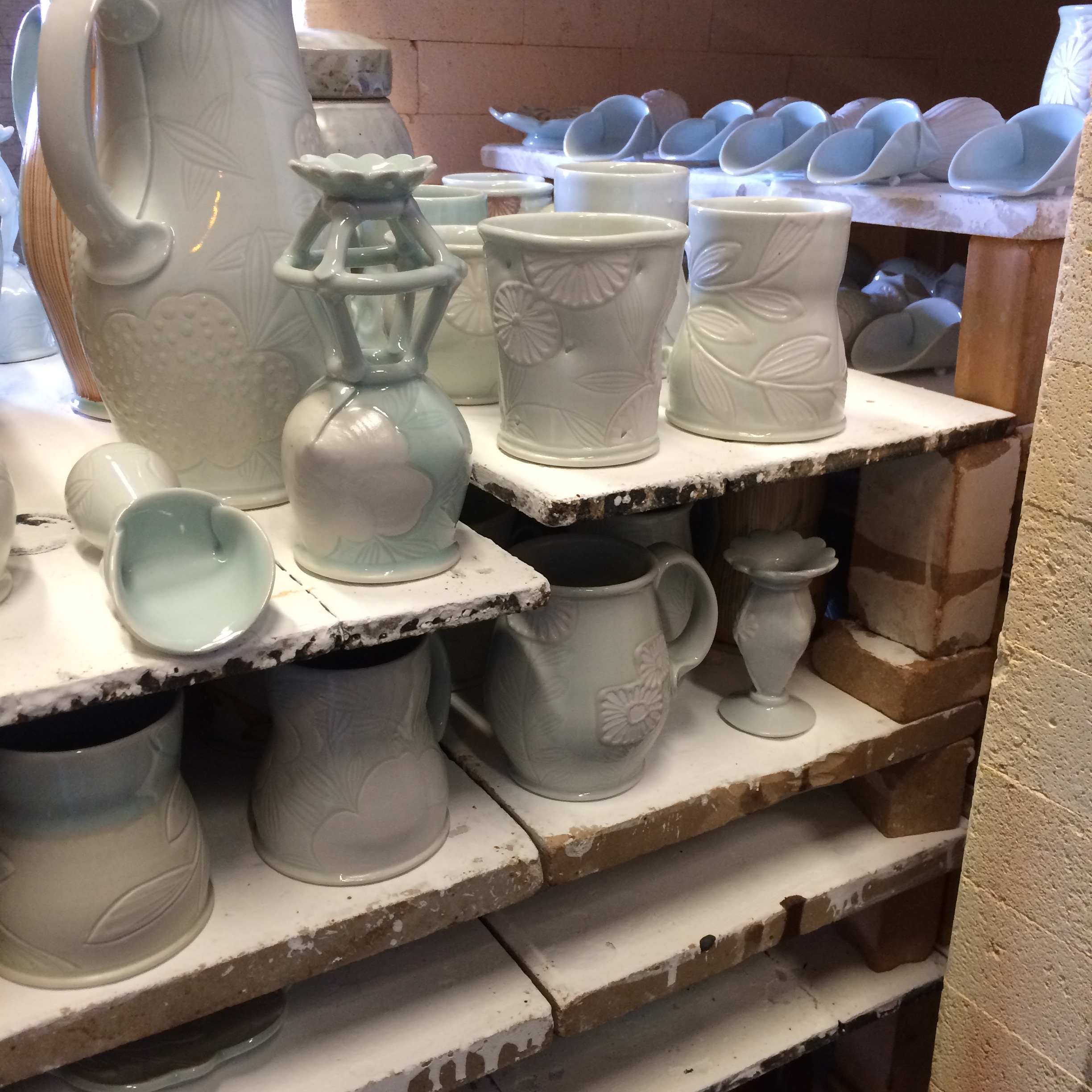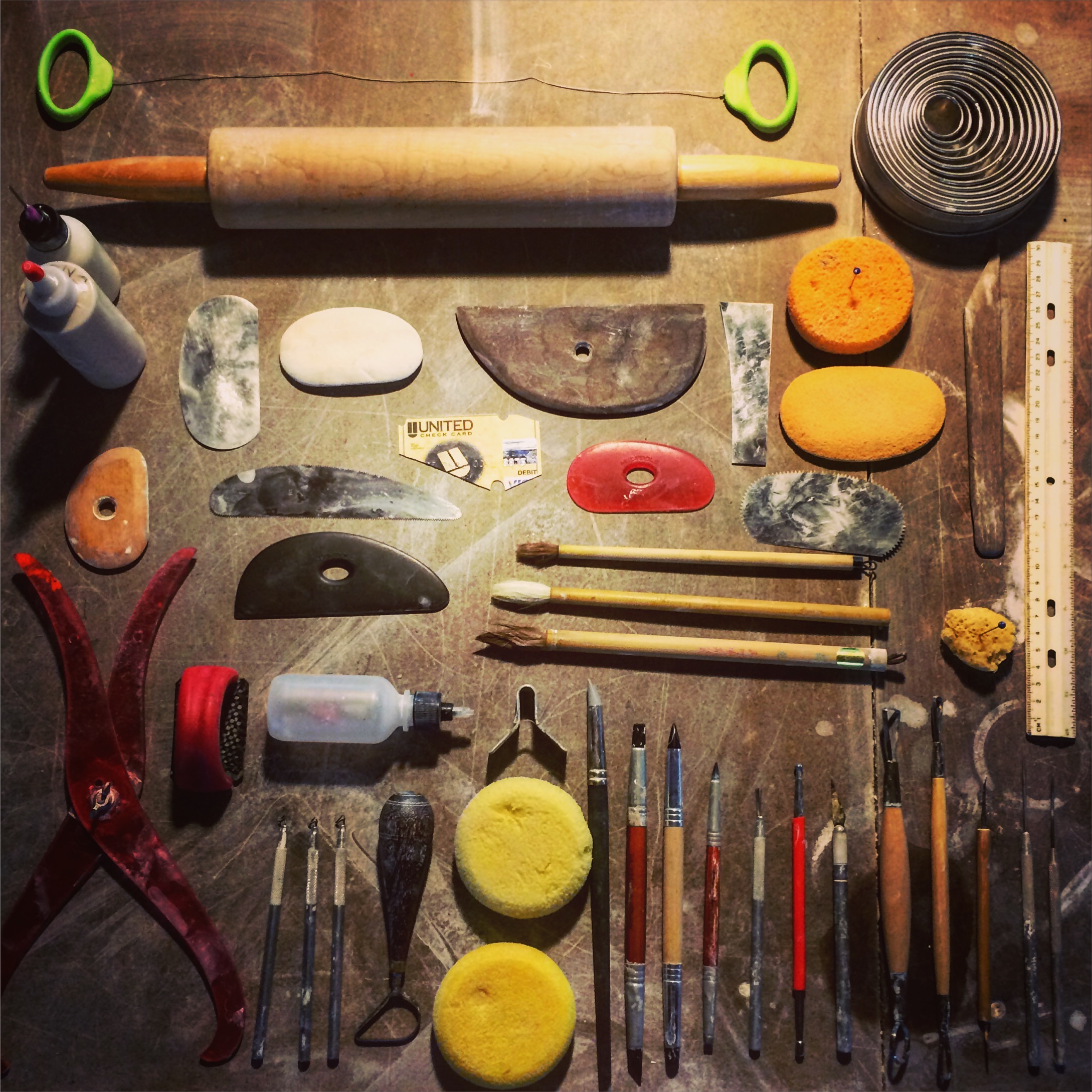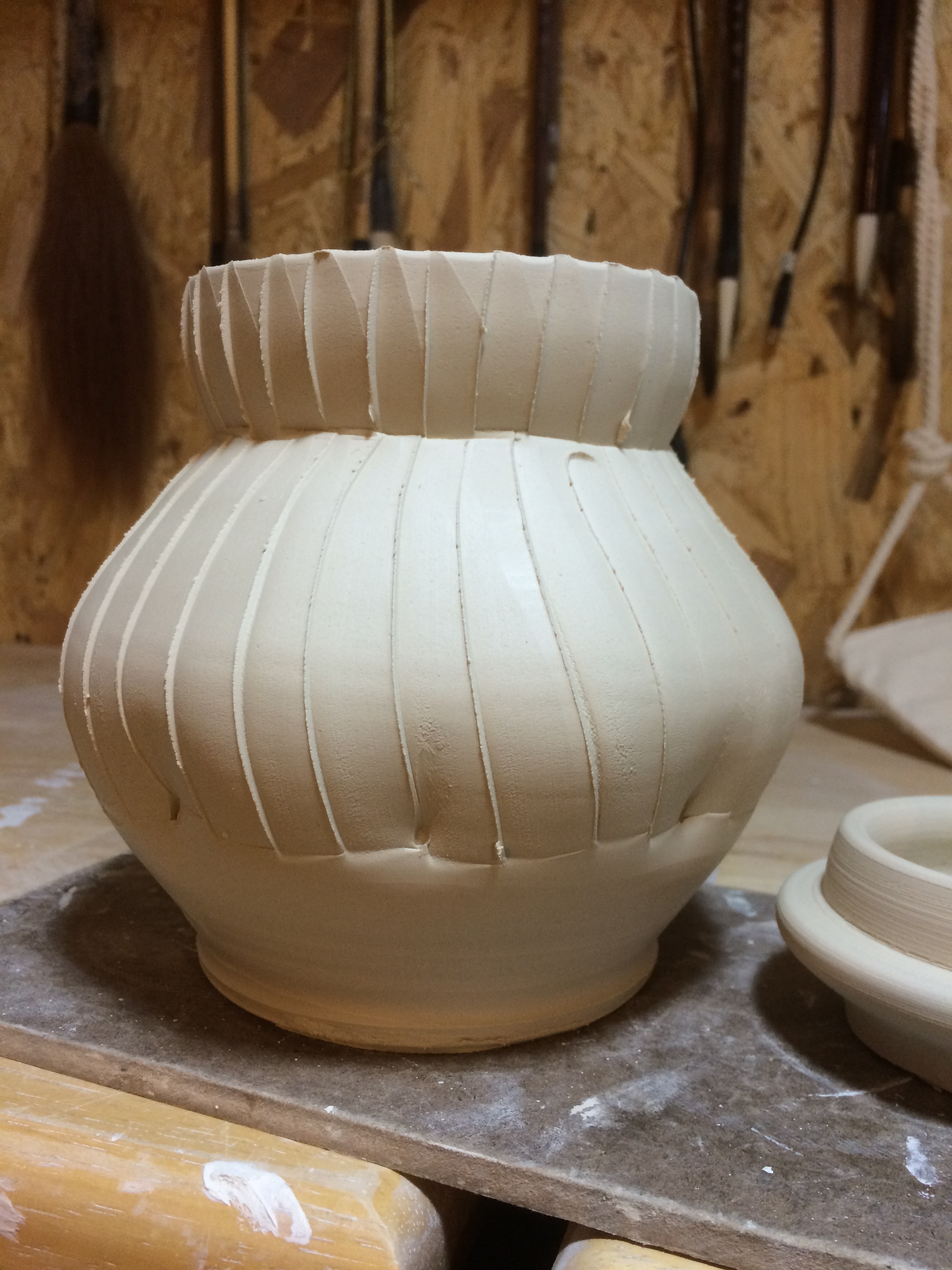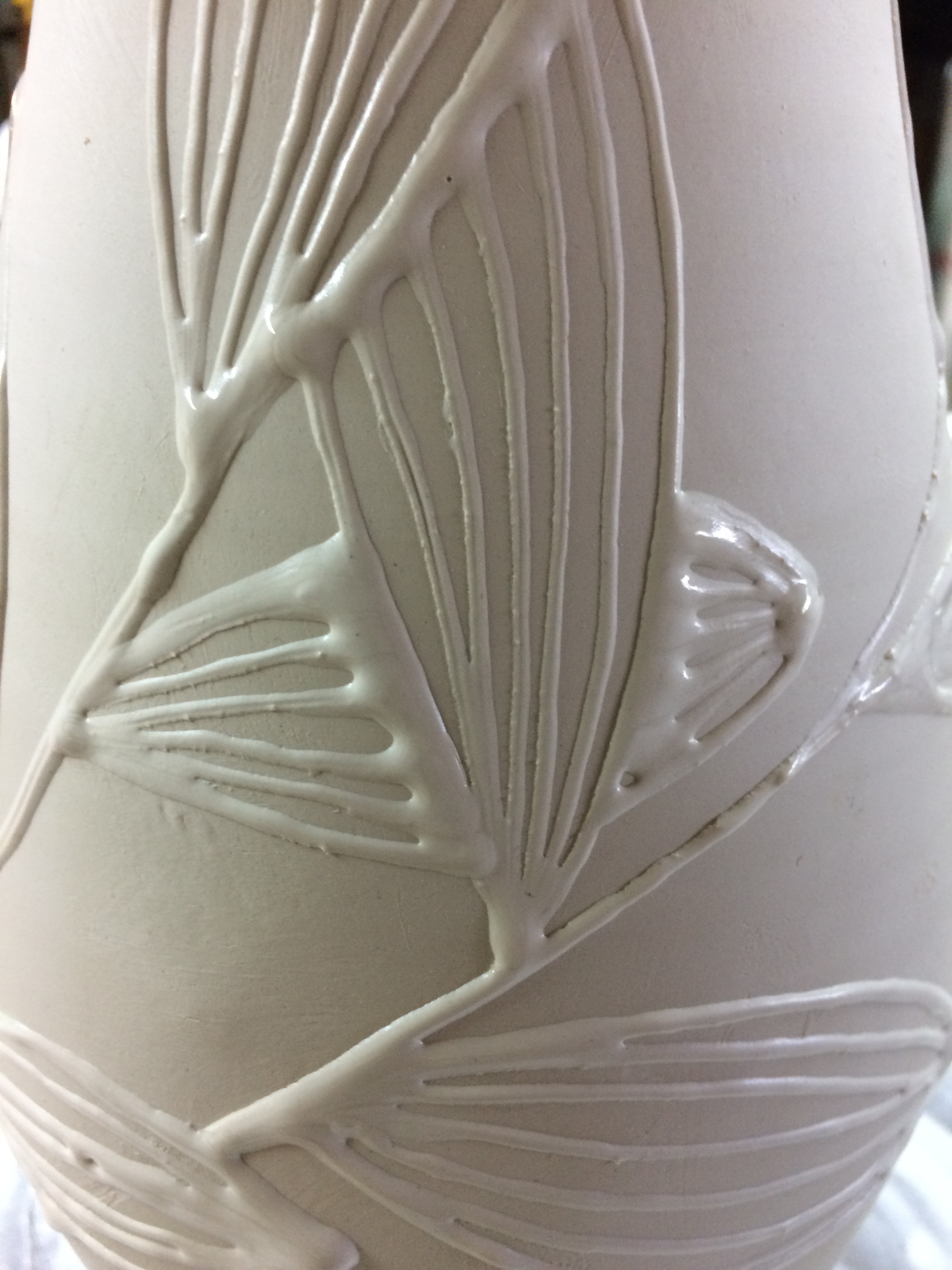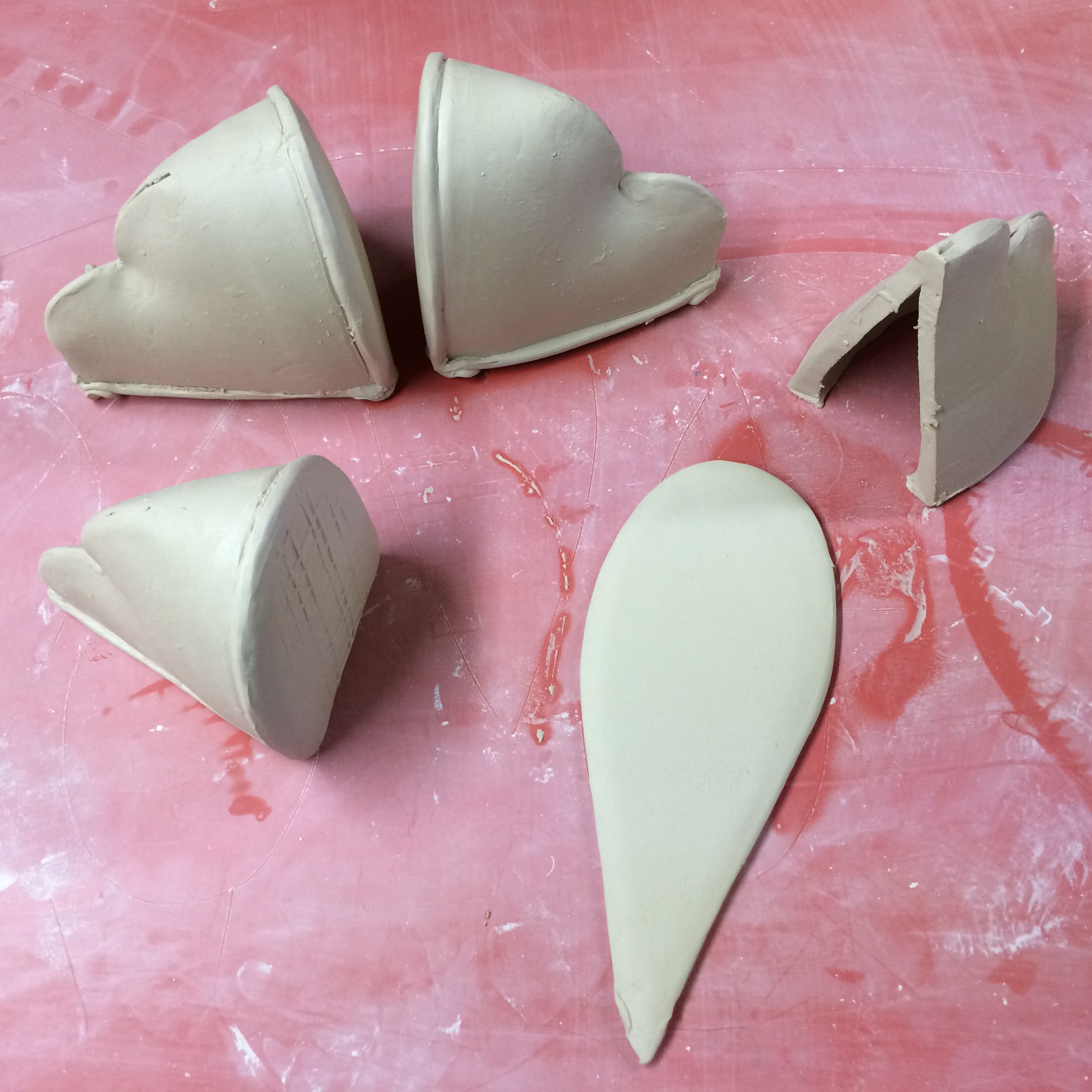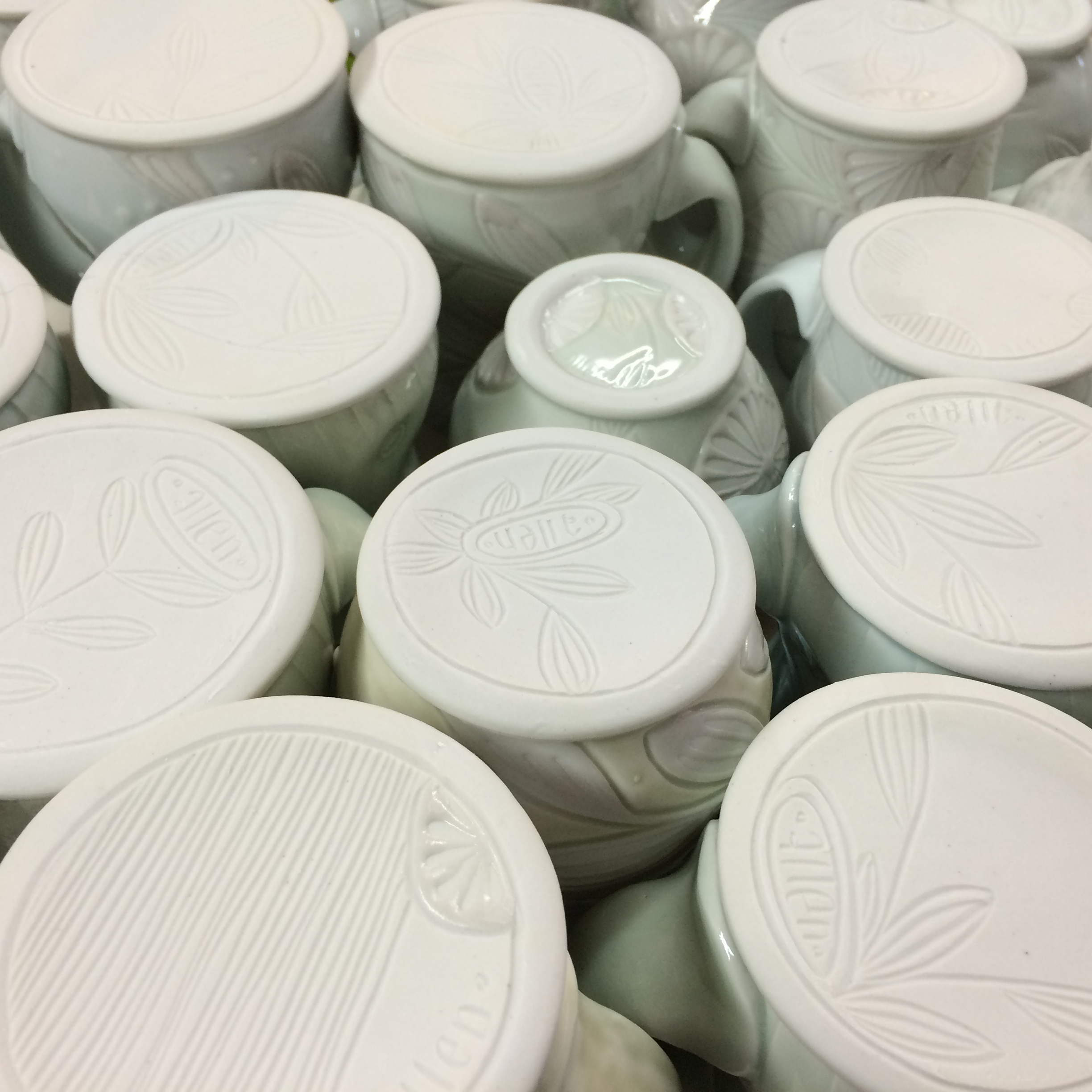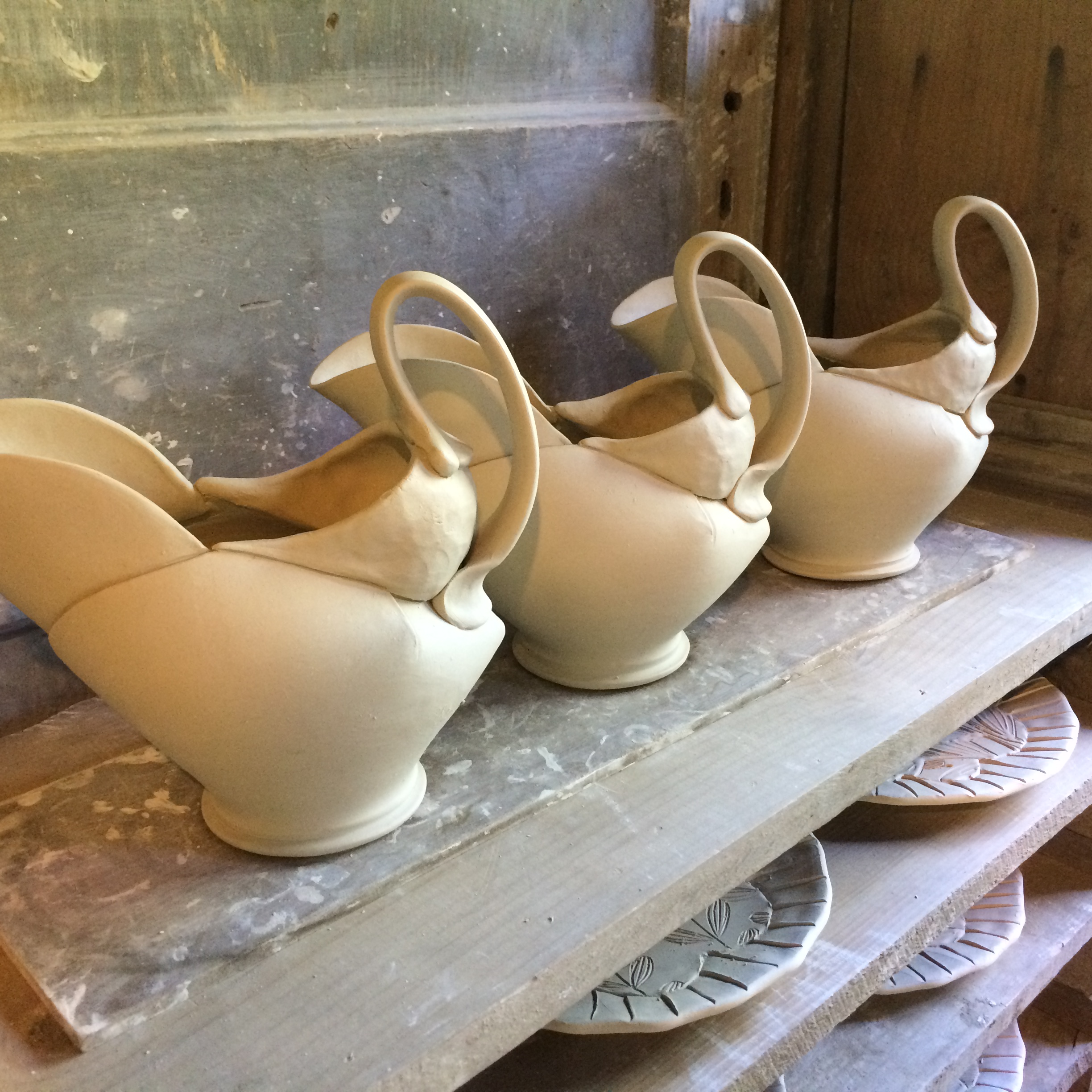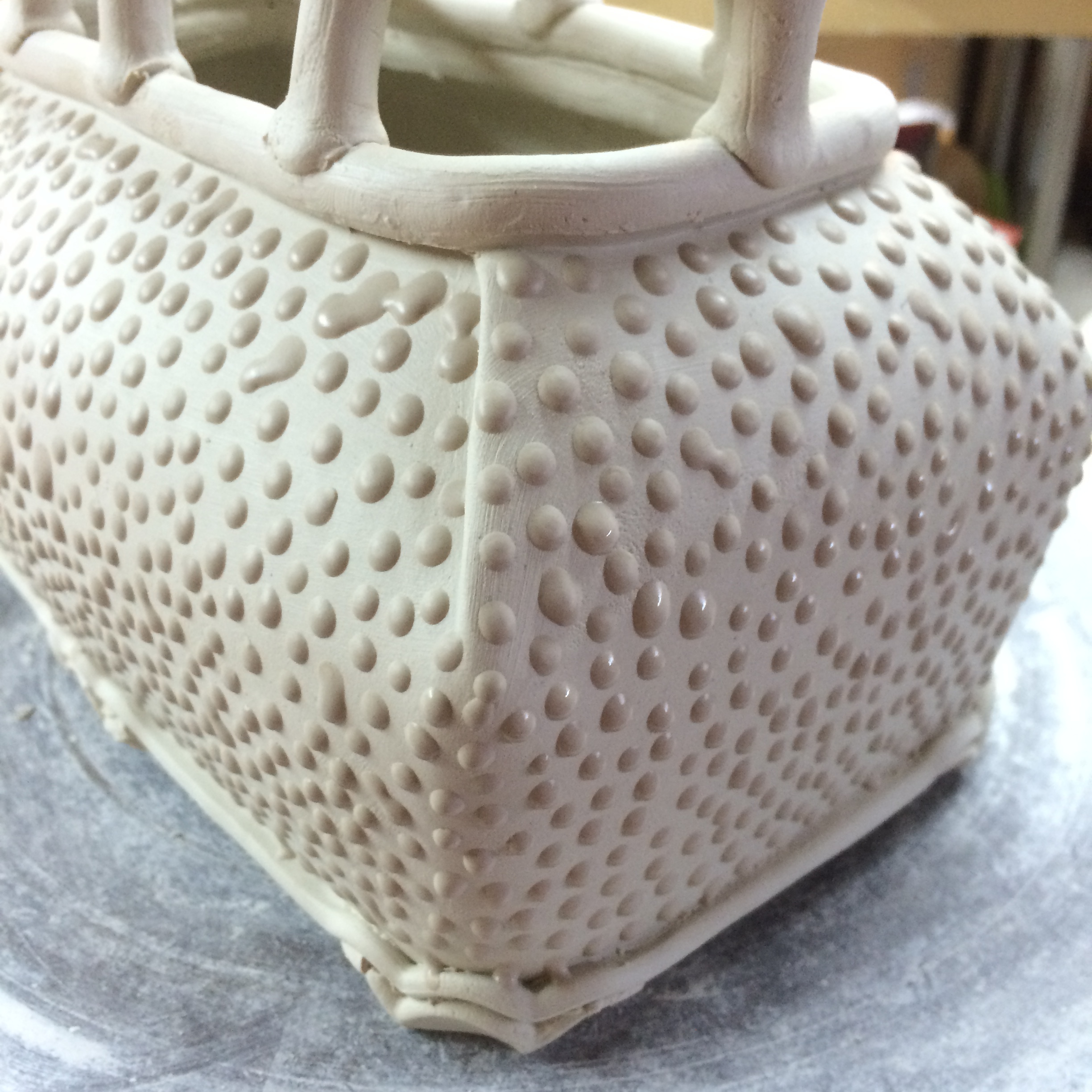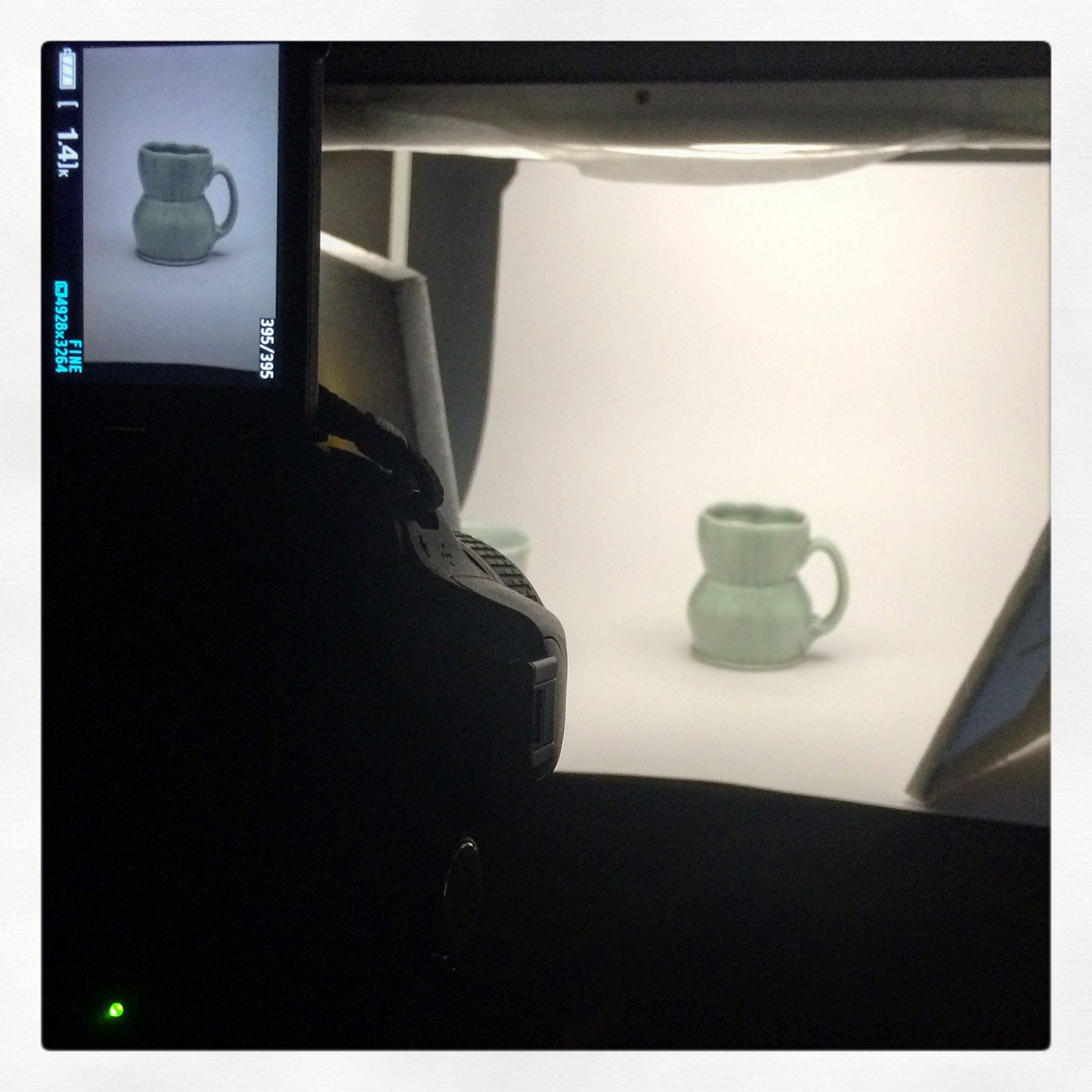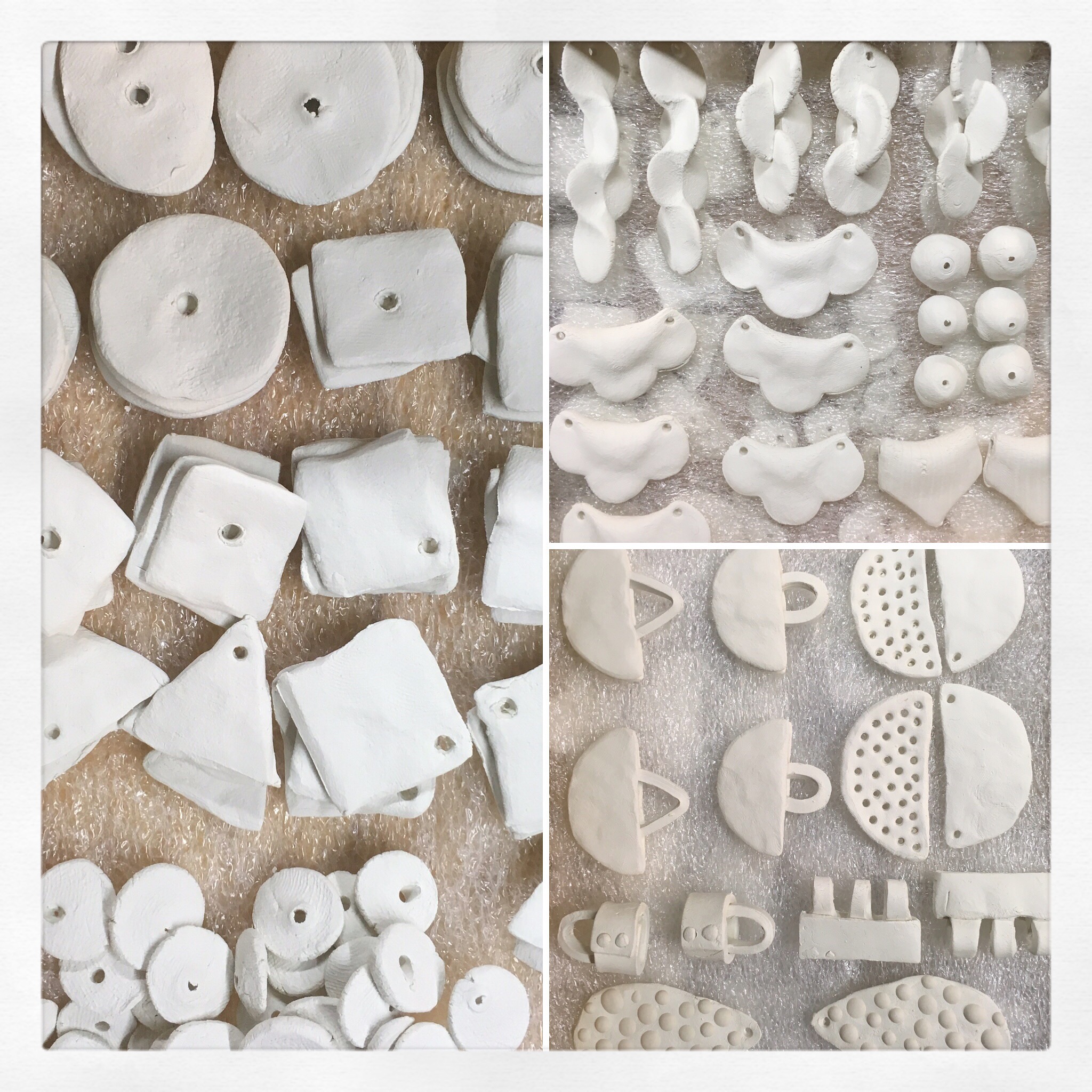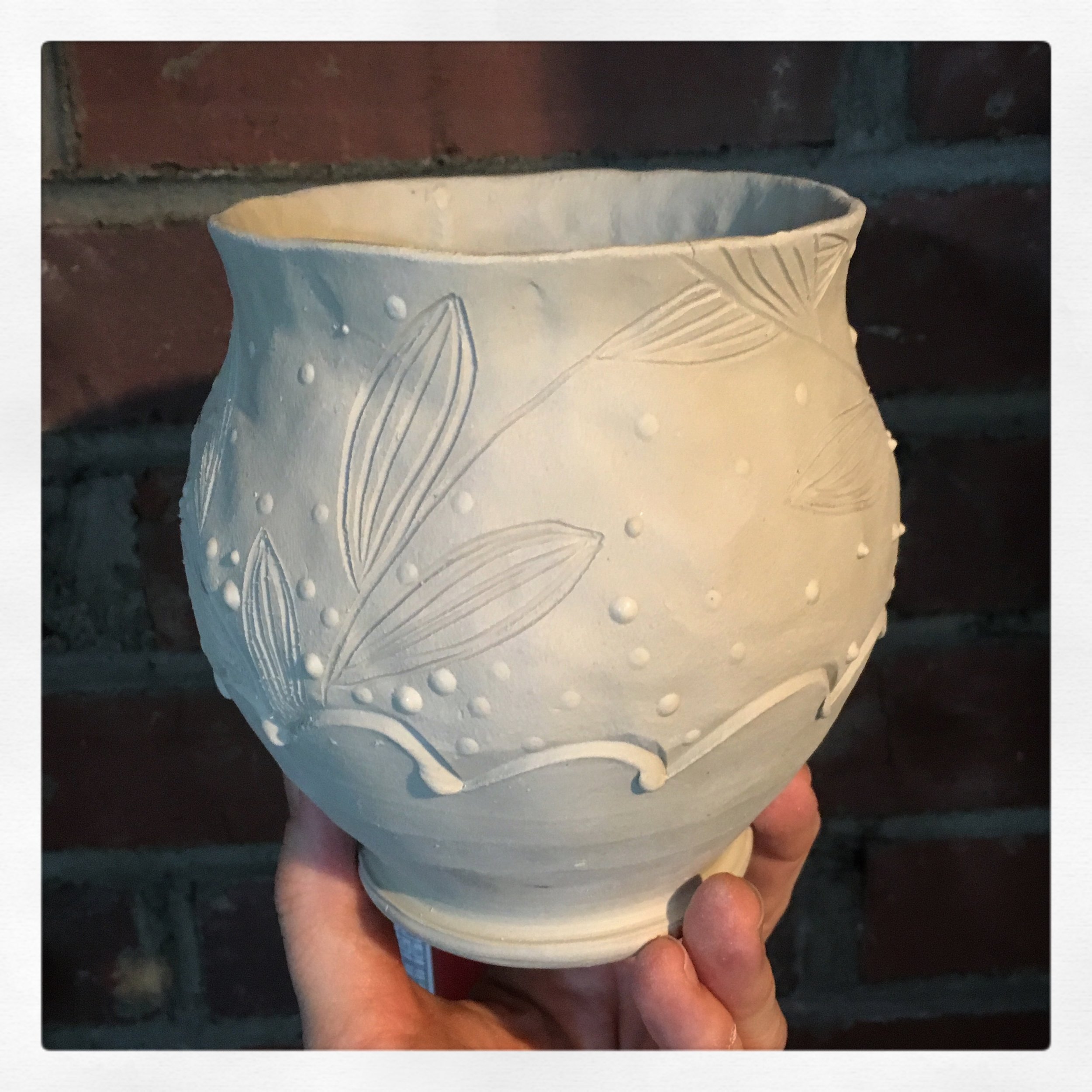My work has made a dramatic shift recently as my current research involves cone 8 dark stoneware instead of a cone 10 porcelain. Because tactility and texture remain important facets of my work, my current research brings those ideas to the forefront. I also shifted from the wheel to hand building with slabs. This process allows my handwork to become more of an essential component. The work is less machined when it is devoid of electric wheel marks. Using paper templates and handmade stamps, I am able to fold, manipulate and add texture to the clay forms at the wet stage. This is the stage of clay that best captures the fingerprints of the maker. It helps narrow the distance between myself and the object. Sometimes, after the form is constructed, I need to alter it even more. This is when I might remove triangle or leaf-shaped darts. In seamstress’s terms, these darts are known as either single-pointed or double-pointed darts.
Here is a brief handout that touches on the difference between single pointed and double-pointed darts.
I also put together a few handouts illustrating how these two types of darts above are utilized in my work (see below). Please note that the photos on the right hand side of each handout below may reflect a combination of the techniques listed on the left. Also note that the initial form that I dart is often NOT a straight cylinder. These handouts are meant to be used as a starting point…to demonstrate what happens to a basic cylindrical form when you remove a dart from it.
Below are a handful of images of my past porcelain work at various stages of the process.



